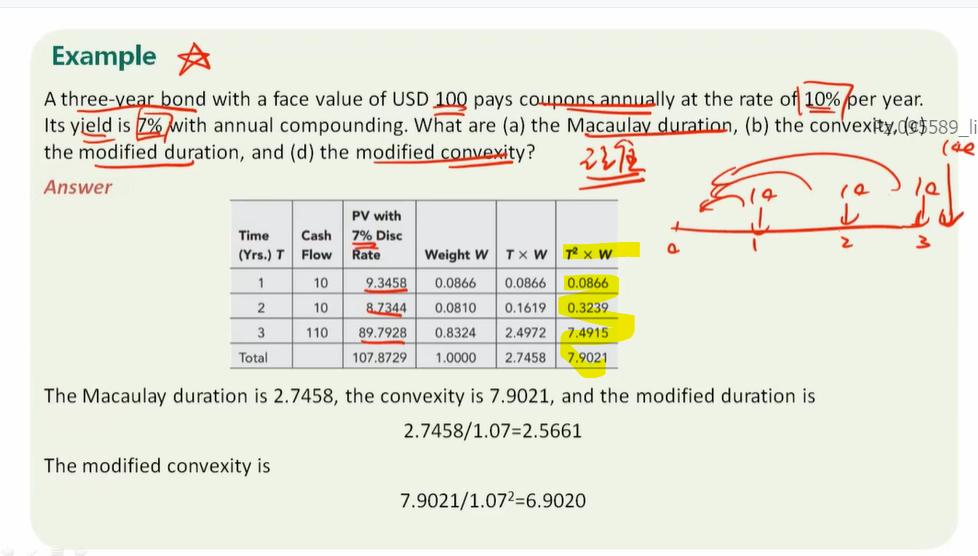NO.PZ2020011303000217
问题如下:
Why is yield-based convexity likely to be greater than yield-based duration for a ten-year bond (assume that rates are expressed with continuous compounding)?
解释:
Yield-based convexity is calculated by squaring each cash flow’s time to maturity and then taking a weighted average with weights proportional to the present values of the cash flows. Yield-based duration is a weighted average of the time to maturity of cash flows with the same weights. For a ten-year bond, the former is clearly greater than the later because, for nearly all the cash flows, the square of the time to payment is greater than the time to payment.
题目问:为什么对于10年期的债券,convexity会大于duration?(假设连续复利)
convexity等于每个现金流占PV的比例,乘它本身离当前时间的平方。
duration等于每个现金流占PV的比例,乘它本身离当前时间。
离到期时间的平方一定比离到期的时间数值大,所以convexity的数值大于duration。
凸性等于它本身到时间的平方,为什么




